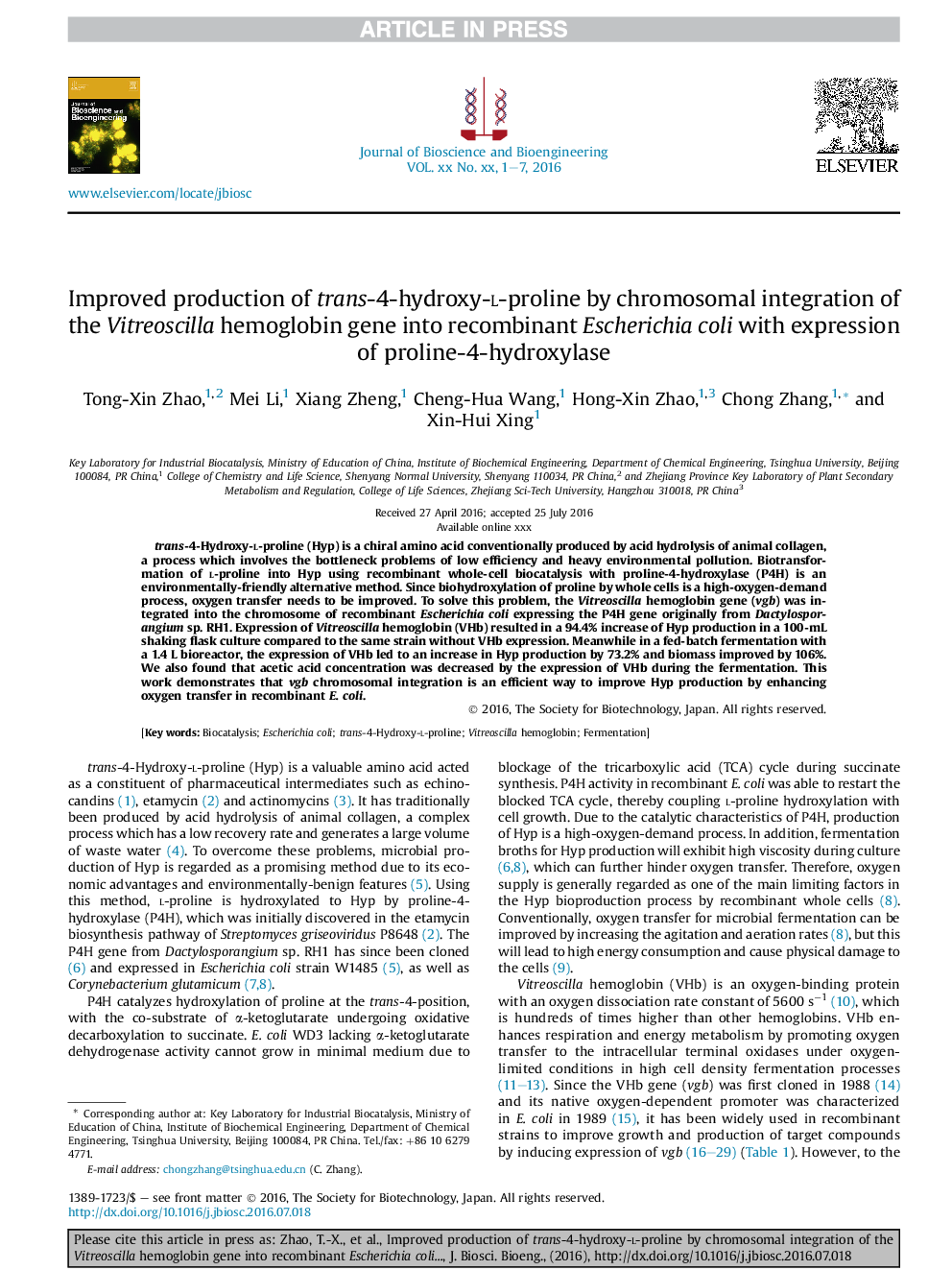| Article ID | Journal | Published Year | Pages | File Type |
|---|---|---|---|---|
| 4753457 | Journal of Bioscience and Bioengineering | 2017 | 7 Pages |
Abstract
trans-4-Hydroxy-l-proline (Hyp) is a chiral amino acid conventionally produced by acid hydrolysis of animal collagen, a process which involves the bottleneck problems of low efficiency and heavy environmental pollution. Biotransformation of l-proline into Hyp using recombinant whole-cell biocatalysis with proline-4-hydroxylase (P4H) is an environmentally-friendly alternative method. Since biohydroxylation of proline by whole cells is a high-oxygen-demand process, oxygen transfer needs to be improved. To solve this problem, the Vitreoscilla hemoglobin gene (vgb) was integrated into the chromosome of recombinant Escherichia coli expressing the P4H gene originally from Dactylosporangium sp. RH1. Expression of Vitreoscilla hemoglobin (VHb) resulted in a 94.4% increase of Hyp production in a 100-mL shaking flask culture compared to the same strain without VHb expression. Meanwhile in a fed-batch fermentation with a 1.4Â L bioreactor, the expression of VHb led to an increase in Hyp production by 73.2% and biomass improved by 106%. We also found that acetic acid concentration was decreased by the expression of VHb during the fermentation. This work demonstrates that vgb chromosomal integration is an efficient way to improve Hyp production by enhancing oxygen transfer in recombinant E. coli.
Related Topics
Physical Sciences and Engineering
Chemical Engineering
Bioengineering
Authors
Tong-Xin Zhao, Mei Li, Xiang Zheng, Cheng-Hua Wang, Hong-Xin Zhao, Chong Zhang, Xin-Hui Xing,
